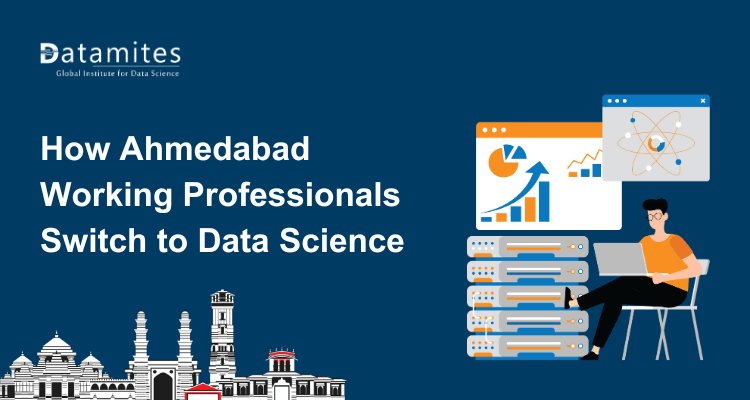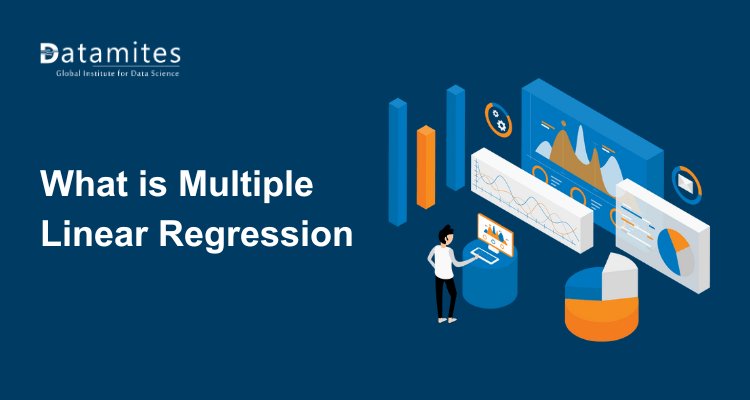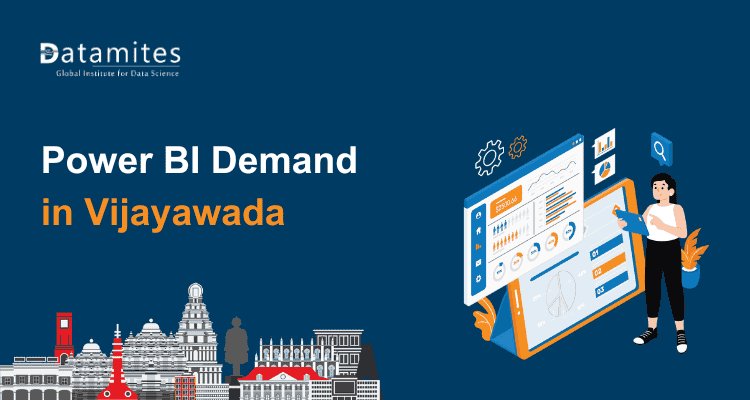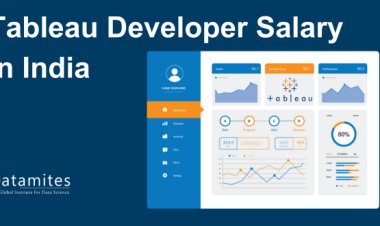A Beginner’s Guide to Bagging in Data Science
Learn how bagging boosts model accuracy and reduces overfitting by combining multiple models. A simple guide to understanding this key ensemble method in data science.
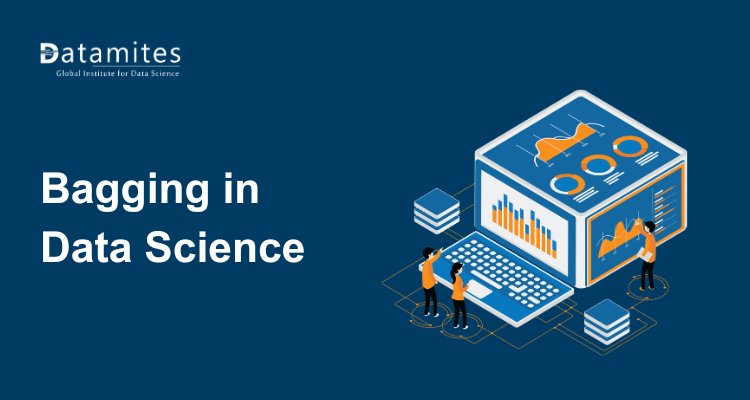
Ever wondered how data scientists boost the accuracy of their models and reduce errors? Bagging, short for Bootstrap Aggregating, is one of the secret weapons in their toolkit. It’s a powerful ensemble technique that combines multiple models to make predictions more reliable and robust. Whether you’re just starting out or curious about improving your machine learning results, understanding bagging is a game-changer. In this guide, we’ll break it down step by step, making it simple and actionable for beginners.
What Is Bagging in Data Science?
Bagging, or Bootstrap Aggregating, is an ensemble learning method that combines the power of multiple models to make more accurate predictions. Instead of relying on a single model which might overfit or underperform bagging creates several models using different random subsets of the same data and averages their results.
Think of it like making a decision after getting opinions from a group of experts rather than just one person. Each model (or “expert”) brings its own perspective, and by aggregating them, we get a more balanced and accurate outcome.
In simpler terms, Bagging in Data Science enhances model reliability by reducing variance. The bagging algorithm explained in brief involves:
- Randomly selecting samples from the dataset (with replacement).
- Training separate models on each sample.
- Combining all model predictions through averaging (for regression) or majority voting (for classification).
This approach strengthens the final model’s performance and ensures it’s less sensitive to data noise or fluctuations.
How Does Bagging Work?
Bagging may sound complex, but it’s actually straightforward when broken into a few simple steps.
- Bootstrapping the Data: The process begins by creating multiple random subsets of the original dataset using sampling with replacement. This means each subset may contain duplicate records from the main dataset.
- Training Multiple Models: Each subset is used to train a separate model often of the same type, like decision trees.
- Aggregating the Results: Once all models make predictions, their results are combined using an average (for continuous outputs) or a majority vote (for categorical outputs) to form the final prediction.
Here’s a machine learning bagging example: imagine training several decision tree models to predict whether a customer will buy a product. Each tree might make slightly different predictions, but when combined, the final outcome is more accurate and stable than any single tree alone.
This step-by-step process is the backbone of Bagging in Data Science, making it both practical and effective for real-world applications.
Refer to these articles:
- How Data Science Uses Cluster Analysis for Customer Segmentation
- Top Databases Every Data Scientist Should Know
- Data Lake vs Data Warehouse: Which Is Right for You?
Advantages of Bagging in Data Science
The advantages of bagging go beyond just better predictions it offers significant improvements in performance and reliability.
- Reduces Variance: By averaging multiple models, bagging minimizes fluctuations in predictions caused by random noise.
- Prevents Overfitting: Since each model is trained on different samples, the risk of overfitting decreases significantly.
- Improves Accuracy: Combining several models results in stronger overall performance compared to individual models.
- Works with Complex Models: Bagging enhances algorithms like decision trees, making them more stable and effective.
For Data Science for beginners, these benefits demonstrate why bagging is often a key topic in Data Science training and courses. Learners can experiment with this technique to gain hands-on experience and see how ensemble methods enhance predictive power in real-world applications.
Popular Bagging Algorithms
Bagging is the foundation of several widely used machine learning algorithms. Understanding these helps beginners grasp practical applications of bagging in data science.
Random Forest
The most popular bagging algorithm, Random Forest combines multiple decision trees trained on random subsets of data and features. It’s used for both classification and regression, providing high accuracy and stability.
Bagged Decision Trees
This method involves training several decision trees on different bootstrapped datasets and aggregating their results. It reduces variance and prevents overfitting in high-variance models.
Bagging Regressors
Used specifically for regression tasks, Bagging Regressors train multiple models on random samples and average their predictions to improve accuracy.
These bagging examples demonstrate how ensemble methods can make predictions more reliable. The bagging algorithm explained through these techniques shows why bagging is a core machine learning technique in data science for beginners.
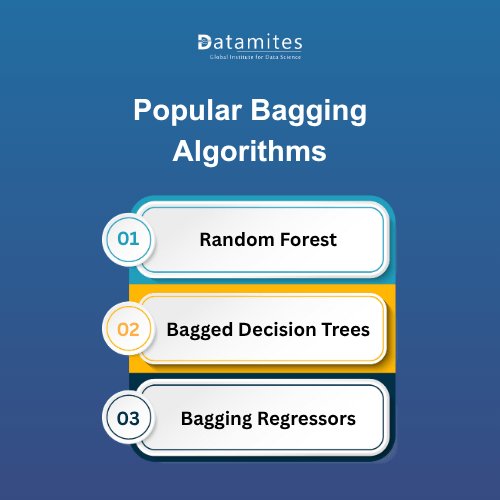
Real-World Applications of Bagging in Data Science
Bagging is widely used across industries to improve model accuracy and reliability. Here are some key applications of bagging in data science:
- Finance: Detects fraudulent transactions and improves credit risk analysis.
- Healthcare: Predicts diseases and enhances medical image classification accuracy.
- E-commerce: Powers product recommendations and customer churn prediction.
- Marketing: Analyzes customer sentiment and optimizes campaign targeting.
- Manufacturing: Predicts equipment failures and maintains production efficiency.
- Retail: Supports demand forecasting and personalized shopping experiences.
- Telecom: Identifies customer behavior patterns to reduce churn rates.
Bagging strengthens decision-making across sectors, showcasing the wide applications of data science in today’s data-driven world.
Refer to these articles:
- Understanding Data Archiving in Data Science
- Your Roadmap to Becoming a Data Science Architect
- The Role of Data Science in Protecting Cultural Heritage
When Should You Use Bagging?
Bagging is a powerful ensemble technique, but it works best in specific situations. Here’s when you should consider using bagging in data science:
- High Variance Models: Bagging is ideal for models like decision trees that tend to overfit the training data.
- Complex Datasets: When your dataset has a lot of noise or outliers, bagging reduces variance and improves stability.
- Improving Accuracy: Use bagging when you want to enhance model performance without changing the base algorithm.
- Classification and Regression Tasks: Bagging works for both predicting categories (classification) and continuous values (regression).
- When Quick Parallel Training is Possible: Bagging trains models independently, so it’s efficient if parallel processing is available.
In short, bagging is best used to stabilize predictions and reduce overfitting, making it a go-to technique in many machine learning techniques for Data Science beginners.
To sum up, bagging in data science is a powerful ensemble method that helps enhance model performance, reduce overfitting, and improve reliability. For beginners, it provides a simple yet effective way to explore the world of machine learning techniques without getting lost in complex math.
As the demand for data science continues to grow, learning practical methods like bagging through professional courses can open the door to numerous career opportunities. According to Research and Markets, the data science platform market will surge from $120.49 billion in 2024 to $154.79 billion in 2025, growing at a 28.5% CAGR. The future of data science is bright, and understanding ensemble methods today will help you stay ahead of tomorrow’s trends.
Now is the ideal moment to embark on your data science journey. Enrolling in a data science training in Pune, Hyderabad, Ahmedabad, Bangalore, Chennai, Coimbatore, or Mumbai equips you with practical skills, hands-on project experience, and expert career guidance, helping you step confidently into this rapidly growing field. With increasing demand for data science professionals across industries, the right training can open doors to diverse and rewarding career opportunities.
Among the top institutes, DataMites Institute stands out for its industry-focused curriculum and emphasis on experiential learning. Through live projects and internship opportunities, DataMites ensures learners gain real-world exposure while bridging the gap between theoretical knowledge and practical application.
DataMites Certified Data Scientist courses, accredited by IABAC and NASSCOM FutureSkills, cover essential tools, machine learning workflows, and advanced analytics skills that are highly sought after across sectors like finance and beyond. For those who prefer classroom learning, DataMites offers data science courses in Nagpur, Pune, Chennai, Mumbai, Bangalore, Hyderabad, Ahmedabad, and Coimbatore. For greater flexibility, their online programs provide the same high-quality education to learners worldwide.

